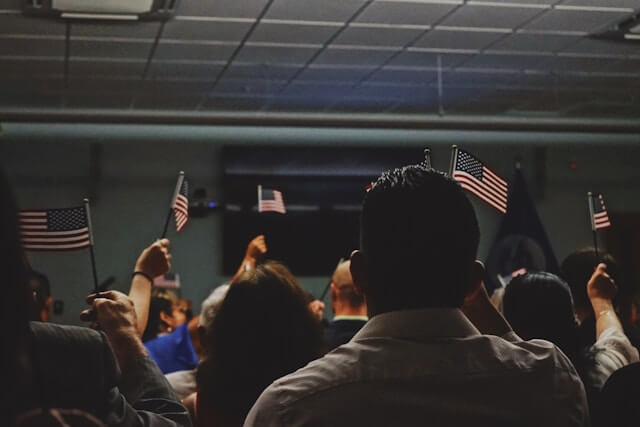If you are in Nigeria and you are thinking of how to apply for a U.S. student visa, we’ve got you covered. This article will guide you on how to apply for a U.S. Student visa from Nigeria.
The type of student visa you will need to study in the USA depends on the degree you want to study there. So read on to learn the basic requirements on how to apply for a student visa in the US.
The USA Student Visa Types
There are three different types of student visas for students that want to study in the US. Below are the student visas types
F1 Student Visa:
This is the most common version of the US Student Visa. It is used to study at SEVP approved US colleges or universities. It is for academic study programs like Medicine, Engineering, etc. You can also use it to study English at an English language institute.
J 1 Exchange Visa:
This is for participation in an exchange program under sponsorship. It is for exchange visitors participating in programs that promote cultural exchange.
It is a non-immigrant status visa that international students need if they are taking part in an international exchange program with an affiliated institution.
M1 Student Visa:
This is for non-academic or vocational study or training in the US.
It does not contribute to a degree-level qualification. It is for vocational study programs like Creative Arts and Design, Computer Science and IT, etc.
Holders of this visa cannot work on or off campus during their studies. But they can apply for a driver’s license and a bank account. They can also access healthcare as standard.
The period of processing F1 and M1 visas is 120 days before the commencement date of the course the applicant is expected to attend. But for J1 visa applicants have to wait for about 70 days. This will be determined by the level of communication between national embassies when the institutional exchange is being arranged.
Also Read: 10 Best Courses That Can Get You a Job in the United States Faster
How to Apply for a USA Student Visa from Nigeria
Step One:
The first step you must take before applying for a student visa is to apply to a Student and Exchange Visitor Program (SEVP)-certified school in the United States.
This is a list of schools, universities, and other institutions that meet the conditions and accept international students.
It is advisable for you to first check the SEVP and see if the institution you are applying to is listed SEVP before applying for a visa.
After you are accepted to the SEVP-approved school, the school’s designated official will send you a document called the Form I-20. This form is “Certificate of Eligibility for Nonimmigrant Student Status.” The Form I-20 is a paper record of information on the Student and Exchange Visitor Information System (SEVIS) database. Each school that accepts international students will mail them a Form I-20.
You will find the following information in the Student and Exchange Visitor Information System (SEVIS) when your I-20 is issued:
- Your SEVIS ID number
- Your program start and end dates
- Your intended program of study
- Your funding sources
- Cost of attendance at your school of choice
- Other personal information
This information is generated based on the application materials you submitted to your university of choice..
Immediately you receive your I-20, check for the accuracy of all your information, and then sign the bottom of the first page. If there is an error on your I-20 it can take a long time to fix. if something went wrong, you may not be given access into the country. keep your form I-20 safe when you travel to the U.S. because you will need it to enter the U.S. You will also need it to work, and for other things like getting a U.S. driver’s license.
Step Two:
After receiving the Form I-20, you must pay the I-901 SEVIS Fee. The U.S. Federal regulations require all F1, M1 and J1 students to pay the I-901 SEVIS Fee before applying for U.S. student visa. You can pay your I-901 SEVIS Fee online or by using Western Union Quick Pay.
You must present the receipt as proof of payment when you apply for a visa. It is important that the SEVIS ID number on your I-901 SEVIS Fee receipt matches your SEVIS ID number on your Form I-20.
Step Three:
The next step is to complete your DS-160 Visa Application. All international students intending to study in U.S. must complete a DS-160 to receive a visa. After you have successfully submitted your DS-160, you will receive a printed confirmation with a barcode on it. Save this form because you will need it for your visa interview.
Step Four:
The next step after doing the above is to find the nearest US embassy or consulate and schedule your visa interview. Before you receive visa approval, you must participate in an in-person interview. During the visa interview, you will have to prove that you meet the requirements under the U.S. law to receive the type of visa that you are applying for.
It is now left to the consular officer to determine if you are qualified to receive a visa and which visa category is appropriate based on your purpose of travel.
Also Read: 10 Reasons Why Your U.S. Visa Application Will Be Denied
Required Documents for the U.S. Student Visa in Nigeria
Below are the documents you need for each type of U.S. student visa if you are applying from Nigeria. It is advisable for visa applicants to ensure they have access to all documents before submitting their application. This will prevent unnecessary delays in the processing period.
Visa applicants either F1, J1 or M1 will need to present:
- A passport that must remain valid for at least six months beyond the period of your stay in the US
- Recently taken passport-size photographs
- A form DS-160 confirmation page as issued upon application
- A form I-20 as provided by your chosen institution
- A certificate of Eligibility
- A full academic transcript
- The payment receipt for a SEVIS I-901 form
- A certificate of results following an approved English proficiency test such as TOEFL
- Proof of funds in the form of a bank statement or other appropriate means to evidence your ability to pay for the costs of travel, accommodation and other expenses during your stay
Applicants for different visa types must also show evidence that they will leave the USA once they have completed their course of study. This can be in the form of an airline ticket out of the USA to your home country.
The U.S. Student Visa Interview
The visa interview is the most crucial part of the visa application process. It is important to know the aims of the interview. This would help you in the interview process. Most questions you will receive will be more about your personality.
The consular officer will like to know more about you. They want to see your real intentions before entering the U.S. Your answers will show if you really wish to study or if there is any other reason behind your visa application.
You may be asked about your program, research field or if you are applying for a master’s degree, postgraduate, etc. When you prepare for these questions and answer them correctly, they will play an important role in supporting your documents.
The Cost of a Student Visa in the USA
The U.S. student visa application fee if you are applying from Nigeria is $160 but with the SEVIS application fee, the total process may cost up to $510.
The cost of visa application varies between types of visa. So, applicants need to remember that they will also need to pay for their SEVIS form apart from their visa application fee.
These fees are non-refundable fees. So make sure you have everything you need before making the payment. The cost of each type of visa application is as follows:
- An F1 visa costs $510
- A J1 visa costs $160
- An M1 visa costs $160
The cost of a SEVIS form stands at:
- $350 for F1 visa and M1 visa applicants
- $220 for exchange visitors on a J1 visa
Also Read: How to Choose Which Country to Study Abroad for Masters Degree
Conclusion
Remember that, once you are through with your program, you will have a grace period of 60 days to leave the U.S. Now that you know how to apply for a U.S. student visa in Nigeria, the sooner you begin your application processes the better chance you will have of securing your spot at an American university.











